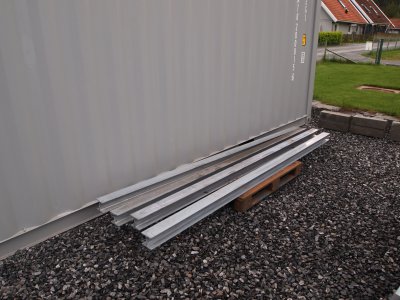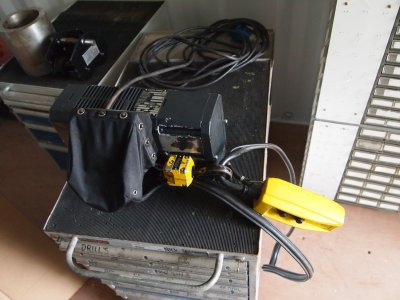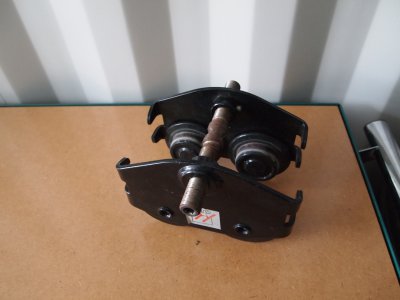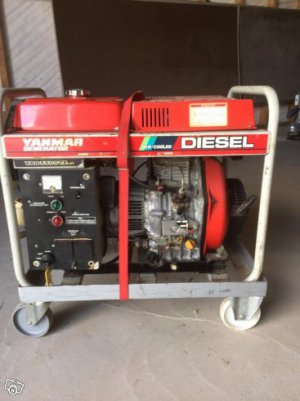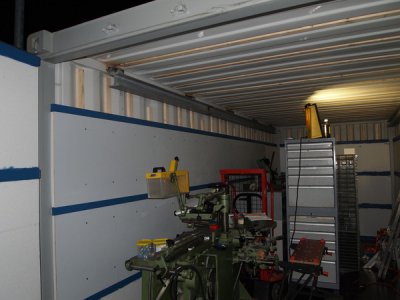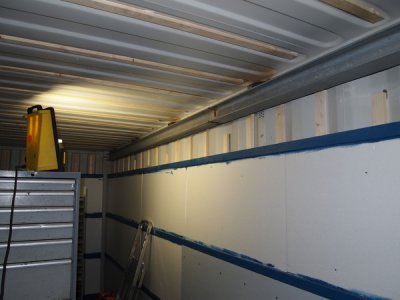It has been a hectic last week. Inbetween rainfall and bedtime I have been working non-stop on the container. The first step was to pick up all the materials.
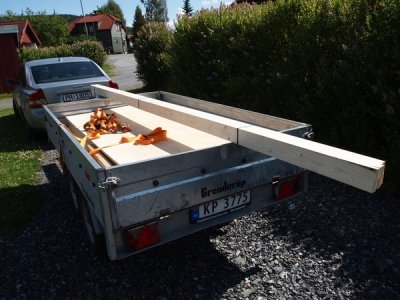
I chose to reinforce the floor with 21mm waterproof ply wood. I ground the underside so that the building glue would stick well to the surface and hold it down to the 25mm untreated ply beneath. Once the floor was glued it was also screwed down, then I started on the wall studs. I tried to optimize the work flow by setting up a saw station with stops at the appropriate lengths to save time.
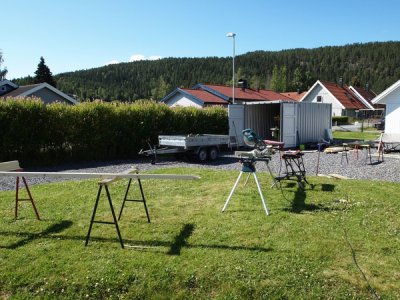
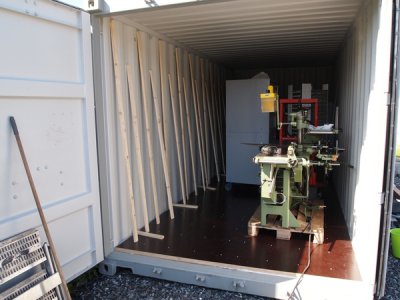
Once the wall studs were in I glue up ceiling battons. I then moved on to the doors and began installation of the styrofoam insulation on the walls.
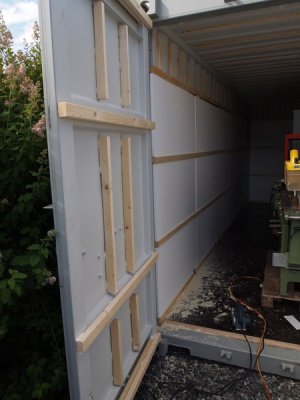
Since the idea is the machines can be strapped down for transit, I needed to cut out the walls where the tie-downs were located. My first pass was with a smaller hole-saw as I didn't have access to my large hole saw at that time.
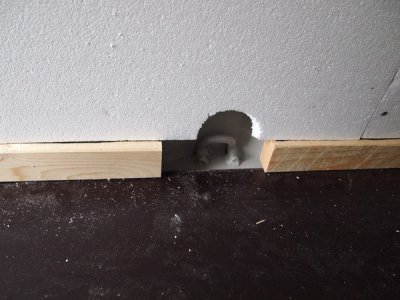
I located my larger hole saw and cut out the styro and the ply seperately as I didn't want to risk cracking the insulation on breaking the fragile edge of the ply.
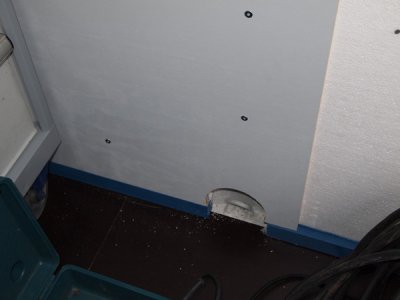
We have begun screwing up the walls as well now. As you can see we have pre-painted the ply (my friend Oreste painting in the picture) and the horizontal wall braces. I chose a light machine grey for the walls and the same blue colour as my machine cabinets to tie everything in together. I wanted a wall colour that would not be too bright to reduce glare and eye strain since I will be using flouro lights.
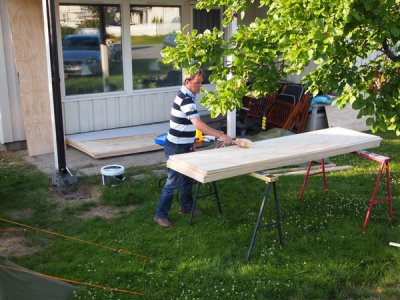
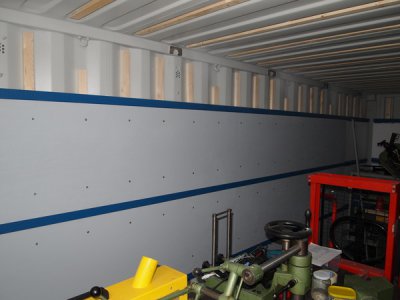
I have had to stop as it's time to weld up the H beams in the corners for the rolling bridge crane. I have cut all the brackets and and the H beams to length and ground all the weld points in the container and on the H beams and brackets. I am just waiting on a friend with the appropriate welding ticket to weld everything.
Although containers look quite precise there is huge variation and tolerances are very sloppy to what I am used to even in the carpentry game. I have spent hours on the planer to shave down the door studs so that the ply wood will not put too much strain on the glue when it is screwed onto the walls. I have also had the help from my friend and his son. This has been very valuable as the window of opportunity between rain is often short and they have really helped speed things along. Their German attention to detail means they have done a top job and require no supervision at all making the process very fast. More photos to follow as I make more progress.
Paul.


